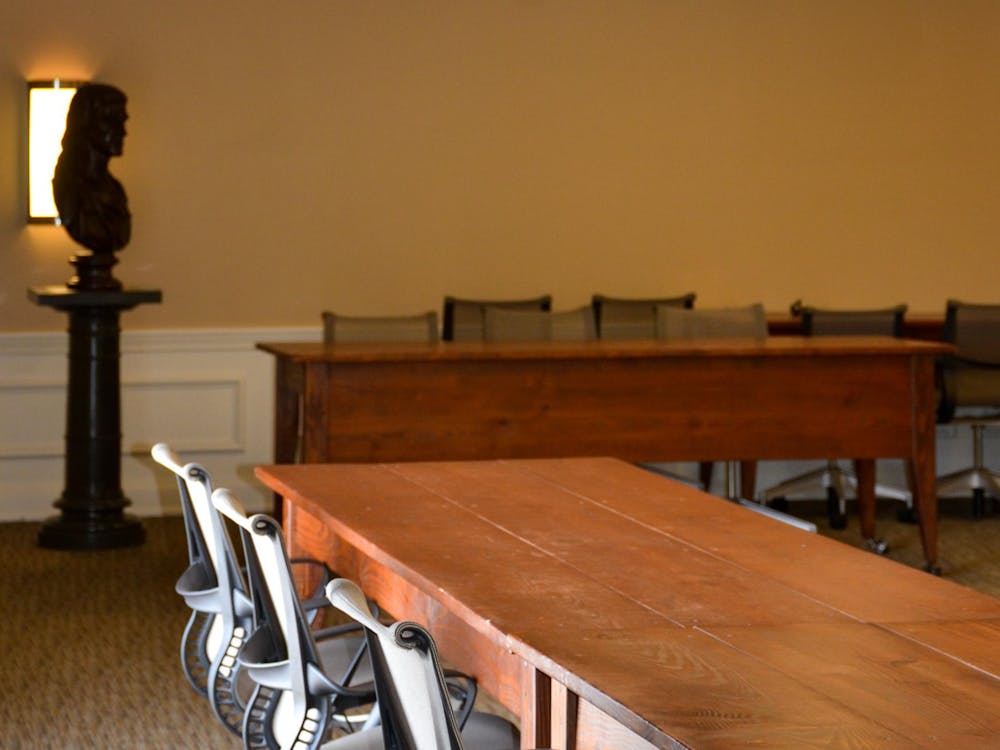Efforts to improve ISIS response times are underway.
The changes include expanding operating hours, temporarily restricting access to applications not deemed "mission critical," streamlining images that were slow to load, reviewing the application programs to make sure the database calls are as efficient as possible and bringing in external consultants to monitor and recommend further improvements to the system.
ISIS, the University's Integrated Student Information System, handles a variety of class registration and financial aid functions and experiences its heaviest demand during the crucial first few weeks of school, when students seek to final register and adjust their schedules.
In past years ISIS often has become overextended during busy periods, hindering student access. The University is aware of the system's flaws and is working to completely replace the system by 2010, according to the Provost's office. Until then, the University will make smaller improvements and increase communication with students about how to maximize the performance of the existing system.
"We need to have an existing system that is up and functional," University Provost Gene Block said. "Our effort is really to warn everyone that we are trying to alleviate those problems."
To that end, Block e-mailed the entire student body, urging students to complete final registration as early as possible and advising them to access the system during the evening and early morning when response times are likely to be best.
Such efforts have been met with limited success, reported Don Reynard, director of applications and data services for ITC. On Wednesday 300 more people completed final registration then did so at the same time last year, and only 22 more then usual did so Thursday.
"Even though we sent e-mails, I expect problems," Reynard said. "I'm not seeing the kind of numbers that would make me confident -- I'm still expecting that on Tuesday and Wednesday we'll have several thousand people that need to perform final registration and still haven't done so."
The system records its heaviest use during the first day of the drop/add period and the last two days of final registration. Since the first day of the adjustment period, the system has withstood periods of heavy demand.
"We've seen very busy times at points, but we're not seeing any performance degradations," Reynard said.
The recent tuning changes, coupled with expanding the hardware capacity by 10 to 15 percent in the fall of 2004, are expected to improve the experience of current students who are unlikely to be at the University by the time the new system is rolled out.
"It became clear that we needed to take some steps to mitigate the system in the short term," University spokesperson Carol Wood said.
Additional changes are expected after the group reviews this fall's registration and seeks to make further improvements in time for the spring.
"These are complicated systems that serve so many people," Block said. "The heaviest usage has yet to come. They have made some changes, and they are starting to help, but we won't know until the students start pushing the system."
A retooled ISIS was not the only change students saw to the University's information technology infrastructure. In early August students accessing their e-mail through Webmail were greeted with a new welcome screen.
According to the ITC website, students checking their e-mail obtain access through NetBadge by using either a digital certificate on their computer or entering their password to gain access to the central mail system.
Once logged in, NetBadge remains valid for one hour, if seeking access from outside the University, or nine hours from the University network. Students are advised to completely close out their web browser if they wish to log out before NetBadge expires, particularly if they are using a public computer.






